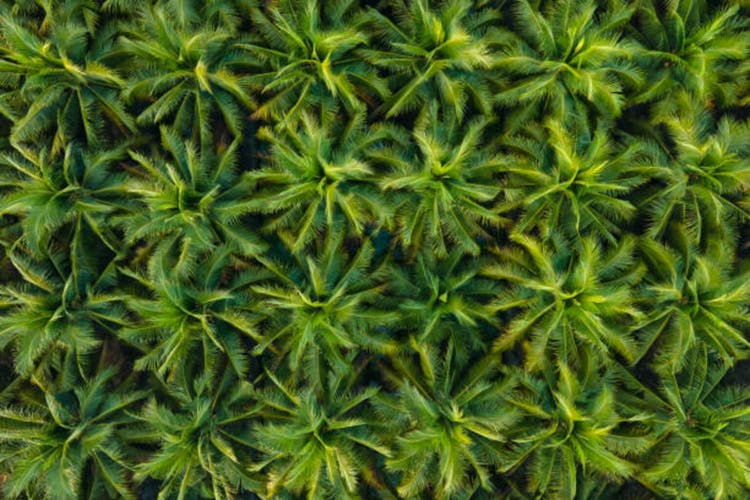Ribolla Gialla white grapes
CollaviniThe Collavini family considers Collio Bianco Broy DOC white wines an expression of the winery’s “soul.”
The name Broy harkens back to the Collavini’s early agricultural roots. The name was inspired by the Italian term "broili," used in the Friuli region of Italy to describe small parcels of land that served as kitchen gardens behind homes, where vines were also grown for family consumption of wine. Large bushes often circled the broili to protect the vines from animals.
The family-owned Collavini winery, now in its fourth generation, began in 1896 in Ravignano (in the province of Udine) in Friuli. Its patriarch, Eugenio, began supplying a few hundred liters of wine to small stores and nobles residing there.
Generations of Collavini Innovation
Collavini Famiglia: Giovanni, Manlio and Luigi
Collavini“If anything truly defines the winemaking landscape of Friuli, it is a relentless spirit of innovation, fearless embrace of experimentation, and a harmonious diversity of styles,” writes wine expert Joe Campanale in Vino: The Essential Guide to Real Italian Wine.”
This certainly aligns with the profile of the Collavini winery, which now produces 1.5 million bottles and exports them to 38 countries, while retaining the winemaking traditions and grape varieties indigenous to the region.
Eugenio’s son, Giovanni, led the winery through the challenges of the First and Second World Wars. In the post-World War II period, Giovanni’s son, Manlio, moved the company to the most suitable terroirs of Corno di Rosazzo (also in Udine). Here, he elevated not only his winery but also the industry by applying the modern science of enology to wine cultivation.
In 1971, Manlio blended Pinot Grigio and Chardonnay grapes to create the first sparkling white wine in the Friuli region. Following this innovation, he introduced Ribolla Gialla, another sparkling wine made from the grape of the same name. Using a new method, which became known as the Collavini Method (a blend of the Charmat and Classic methods), Ribolla Gialla became one of Italy’s most popular wine exports.
In another break with convention, the Collavini family bottled Pinot Grigio in transparent Bordeaux bottles to showcase its straw color and add elegance to its presentation. Manilo developed an international market for the wines by selling them to Friulians who emigrated from Italy to Argentina and Canada in search of better economic opportunities.
The fourth generation of the Collavini family, comprising Giovanni and Luigi, now works closely with their 88-year-old father, Manlio, who has been dubbed "The Lord of Ribolla Gialla."
The Birth and Refinement of Collio Bianco Broy
Collio Bianco Broy
CollaviniThe Friuli wine region is renowned for its white wines, which are made from indigenous and international white grape varieties. The Friulian lifestyle “revolves around a glass” with DNA woven into the culture and traditions since Roman times,” says Luigi in a virtual vertical tasting of six vintages of Collio Bianco Broy.
Introduced in 2003, Colliio Bianco Broy is a blend of signature Friulano grapes (40%), Chardonnay (40%) and Sauvignon (20%). The winery introduced this cuvée to compete with the most important white wines in Italy.
This name originates from the Italian “collio,” meaning hillsides, referring to the strip of hills on the Slovenian border where most of the Collavini grapes are grown, inland from the Adriatic Sea in the south and the Alps to the north. The range of varietals produced here is impressive in both richness and length.
“The complexity of two different climates, the cold winds from the north and the warm winds from the south, brings a unique complexity to the wines,” says Luigi. “The winemaking process includes partial drying of the grapes and aging on fine lees, a technique that adds to its remarkable sensory profile.”
A vertical tasting of Collio Bianco Broy offers the opportunity to experience the evolution of the wine over time. Between 2003 and 2008, the wine was fermented in barrels and steel, resulting in a wine that was heavy and rich.
Although the wine was popular, Manlio was determined to make his Broy more territorial. In 2009, Collavini discontinued using barrels, making the wine purer and emphasizing the natural elements over the winemaker's influence. He changed the blend to 50% Friulano, 30% Chardonnay and 20% Sauvignon.
In its latest innovation, the winemaker reintroduced oak barrels from Beaune to add to the richness and elegance of the wine, while carefully avoiding an oaky taste.
Wine Tourism in Friuli, Italy
Autumn landscape view from Rosazzo Abbey in Friuli region, Italy
gettyAs mentioned previously, the Collavini winery is headquartered in the small commune of Corno di Rosazzo, beside the Corno River. The surrounding area features rolling hills, historic churches, villas, and, notably, the tenth-century Abbey of Rosazzo. This landmark is the location where Benedictine monks first cultivated Ribolla Gialla.
Visitors will also find cultural and historic gems in the larger cities of Udine (about one-half hour away) and Trieste (about one hour away).
Some of the especially inviting small towns nearby include Cividale del Friuli, Aquileia, and Grado. Cividale del Friuli is known for its frescoed Lombard Temple and Monastery of Santa Maria in Valle (named a World Heritage Site in 2011), and the fabled Devil’s Bridge over the river Natisone.
Aquileia, one of the largest and wealthiest cities under the Early Roman Empire, was once a major center of trade. The area is inscribed on the World Heritage List for its Basilica and archaeological remains.
Grado is a small medieval seaside town by the North Adriatic Sea. Overlooking a lagoon, it draws many tourists to its beaches.
Visitors can leave their cars and walk or bike along the 1.8-mile Vigne Alte walking path, which winds through the gentle hills, dotted with colorful vines that change with the seasons.
Friulian Hospitality at the Collavini Winery
Charming Osteria della Ribolla, on-site restaurant at Collavini Winery
CollaviniThe winery is situated in a restored 16th-century manor house, offering picture-perfect views of the sloped vineyards.
Guided Tastings
With advance reservations, wine enthusiasts can sample the winery’s sparkling wines (including Ribolla Gialla Brut), white wines such as the Broy Collio Bianco, T-FrIulano and Pinot Grigio, and red wines like Schioppettino and Refosco.
Pairing Foods and Wines
Pairing of Frico, a typical Friulian dish, with Collavini wine
CollaviniDining at the on-site restaurant at the Collavini winery allows visitors to pair these exceptional wines with some of the region's traditional cuisine. Chef Sasa Klancic and his team welcome guests to Osteria della Ribolla by offering them a tajut, a Friulian term for a glass of wine. The seasonal menu includes Friulian specialties of Habsburg and Slovenian origin. The winery received glowing reviews on Google.
A Corner of Authenticity
Located in the far northeasternmost corner of Italy, bordering Slovenia and Austria, the best way to access the Friuli wine region is by flying into the international airports in Venice (approximately 1.5 hours away) or Milan (approximately 4 hours away), and then renting a car to explore the subregions.
Although not easy to reach, the rewards of Friuli wine tourism include visiting a still-authentic area of Italy, relatively untouched by mass tourism due to its location. It offers opportunities to taste and learn about the region’s unique wines, to meet historic winemakers like Collavini, and to discover the cuisine and cultural traditions of an area shaped in part by its geographic borders with Slovenia and Austria.
IF YOU GO
Map of Friuli-Venezia Giulia in Italy
getty.png)











 English (US) ·
English (US) ·